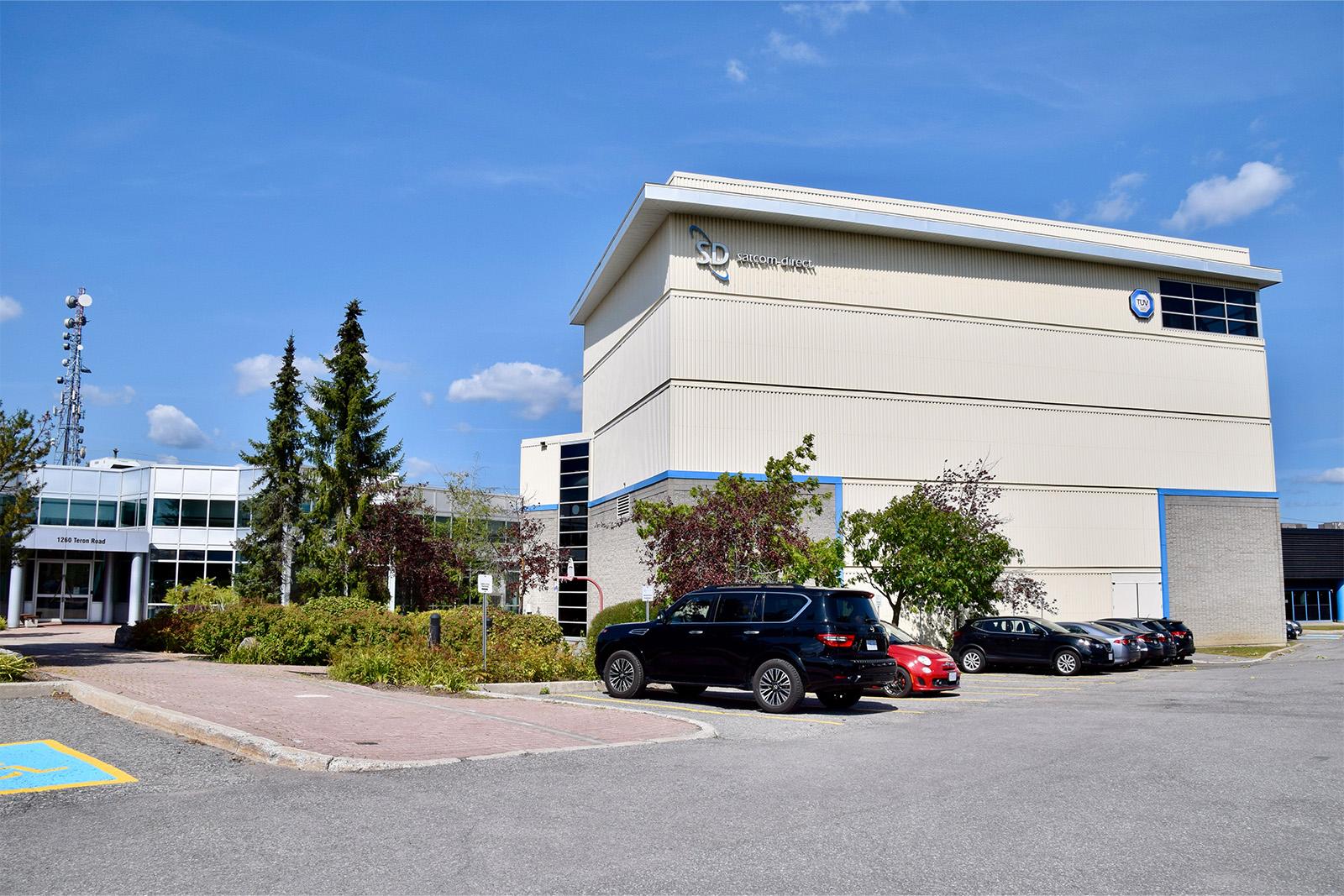
Satcom Direct’s manufacturing facility in the Ottawa suburb of Kanata, Ontario.
LAS VEGAS—Gogo had previously sought to acquire Satcom Direct (SD) before the surprise September announcement that it had entered into a definitive agreement to buy privately owned SD, consolidating two major providers of inflight connectivity to business aviation.
Briefing reporters Oct. 22 at NBAA-BACE, Gogo and SD executives said the pending acquisition is not a response to competition from Starlink, which has jumped ahead of legacy providers in the expanding market for satellite broadband connectivity.
“This is Gogo’s third attempt at seriously considering some type of merger or acquisition of Satcom Direct,” said Sergio Aguirre, Gogo Business Aviation president and chief operating officer. “Prior to this [latest agreement], Starlink didn’t exist.”
Gogo’s proposed cash and stock acquisition of SD, which was undergoing regulatory review, will create “a brand-new company” with a multiband, multiorbit, multidomain portfolio of inflight connectivity hardware and services, executives said.
Gogo Business Aviation is advancing a new Ku-band offering called Galileo that connects with the Eutelsat OneWeb constellation of low Earth orbit (LEO) satellites. The Broomfield, Colorado-based company expects Galileo service to begin this year.
When it launches, Galileo will compete directly with Starlink’s Ku-band service, which is supported by its own constellation of LEO satellites. Gogo also expects to launch a new 5G air-to-ground (ATG) service next year. Users will be able to access the satellite and ground services through Gogo’s Avance router platform.
Melbourne, Florida-based SD is an inflight connectivity service provider and reseller that has partnered with satellite network operators Eutelsat, Intelsat, Iridium and Viasat to offer both Ku /Ka and L-band services.
SD builds its own modem units and routers in the Ottawa suburb of Kanata, Ontario, and has developed two tail-mounted, mechanically steered “Plane Simple” antenna systems to connect with the Intelsat FlexExec Ku-band and Viasat Jet ConneX Ka-band services, both supported by geostationary (GEO) satellite constellations.
“The acquisition bolsters the fact that the combined business will be the only agnostic [connectivity] provider in business aviation,” said SD President Chris Moore. “You’ve got the ATG network, LEO, GEO, Ku -band, Ka -band—the way we’ve developed our routers. We believe that’s a massive differentiator of where the industry is going,” he asserted.
“Starlink is on everybody’s lips at the moment,” Moore added. “But really, when you look at it, that’s just one solution.”
Three weeks before Gogo unveiled its plan to acquire SD for $375 million in cash, 5 million shares of Gogo stock, and up to $225 million in payments related to performance goals, SD hosted a press tour of its manufacturing facility in Kanata, which is managed by former EMS Technologies/Honeywell executive Joanne Walker. Moore, who remarked that he was visiting Gogo at that same time, said it was premature to discuss what the Kanata facility’s disposition may be under Gogo management.
“We’re very fortunate to have really good [manufacturing] positions with Gulfstream and other OEMs,” Moore said. “We’re not going to jeopardize those positions with the OEMs. We’ll do the right thing for the business, but we can’t do that planning at this point.”
With the acquisition pending, executives said it also was too early to say whether SD’s router hardware will be modified to integrate Gogo 5G service. “Our product road map and strategy will be based on customer demand and need, but it’s premature to talk about that detail,” Aguirre said.
The executives did not say whether SD will continue its development with Israel’s Gilat Satellite Networks of a fuselage-mounted, electronically steered antenna (ESA) for its Plane Simple product line that would connect to OneWeb’s satellites. Gogo has partnered with Hughes Network Systems to build ESA antennas for its Galileo service.
What the executives emphasized is that Gogo’s pending acquisition is not a defensive response to the competitive threat Starlink poses.
“Our biggest competitor is not Starlink, it’s the do-nothing people,” Aguirre said. “Seventy percent of business aviation still does not have a broadband solution. We’re going after that 70% that doesn’t have [broadband]. This has nothing to do with Starlink, but it’s sure going to make their life harder.”





